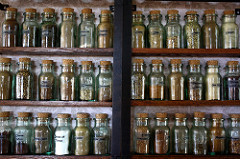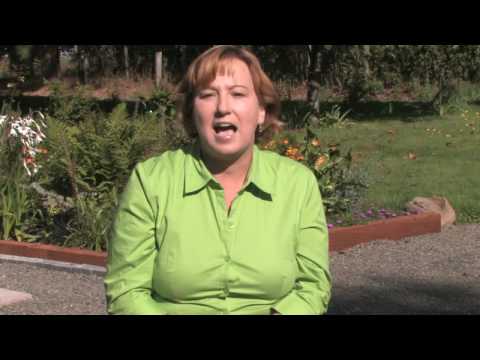WA balcony herb garden is a great, fun, way to get started growing your own healthy food at home. Now, we’ve gone over the basics of balcony herb gardens before, when we touched on how to grow vertically in small spaces to maximize your output, but now we’re going to talk a bit about actually designing what goes in your balcony herb garden.
What Do You Eat?
The first step in any good garden is to know what that goes in is going to be eaten when it comes out. If you’re growing a whole bunch of plants, or herbs in this case, that you’re not going to eat, then it’s just a huge waste. Think about the spices cabinet you currently have in your apartment. If you’re anything like I was, you’ve been hauling around a ton of spices, inheriting other people’s spices and herbs along the way until you’ve got a cabinet full of turmeric and jerked spice that you’ve never opened. Not that there is anything wrong with turmeric or jerked spice, but I don’t eat a ton of food that uses those.


Similarly, if you’re starting this garden project as part of a New Year’s resolution to eat completely different than you have in the past, then you might want to consider if you’re biting off more than you can chew at once. If you’re moving from greasy fast food every meal of every day to complete home cooking, adding in the growing project might be a bit ambitious.
Start with Some Basics for Your Balcony Herb Garden
Try and grow some herbs that show up across a range of recipes. For instance, I love rosemary. It goes with chicken dishes, steaks and is great in scrambled eggs. Plus, it is extremely easy to grow. There’s really very few dishes where a bit of rosemary won’t brighten up. I also like to make a number of Italian sauces because they’re easy and I get to use the tomatoes from my backyard. So, in my home balcony herb garden I grow oregano, basil and parsley. While those were all designed for sauces, they’ve also found their way into many other dishes I make.
These are just the basics of what I do, but you can experiment with your herb planning based on your own menu planning.
Size Matters
The size of the plant you’re growing is a critical planning step for your balcony herb garden. Some herbs, like rosemary, can grow into huge bushes that take over the whole tiny space. Others like basil are more of a tall leafy plant that tends to be a bit more delicate. Below is a video from VanVeenBulbs.com that helps walk through what Yolanda did when planning her herb garden.
Hi, this is Yolanda, from vanveenbulbs.com. In this segment, we’re going to learn about how to design an herb garden, so your garden is part of your own personality, so I love planting plants in my garden, that I use in the kitchen, and so the first thing that you should do, when you design your garden or your herb garden, is deciding what herbs you want to grow, and an easy way to decide, is to just look in your cabinets, and so I always look and see which herbs do you really use? And then those are the ones that you should grow, because if you’re growing a lot of herbs that you’re not using, then it’s kind of silly, and it might be a waste of space, so make sure first, to figure out what kinds of plants you want to grow.
Plan to Your Pallet
 I love rosemary, and I love my Cajun spice, and it’s got thyme in it, so I think I can try to make my own too. It’s just cayenne pepper and thyme, and a few other seasonings, so I can try to make it on my own. There’s dill seed, basil leaves, parsley, oregano, so I know I want to put those plants in my garden. A few of my other favorites are basil. I love them in all my pestos, and with a tomato, and some cheese on it. Thyme of course, we talked about that, and spearmint. Spearmint is such a nice plant in the garden, because you can just take a little piece and put it in your mouth, and it’s just like chewing gum almost. It makes you feel fresh. It’s a nice scent, and a little bit with some lemonade, is really nice. First thing when you’re designing your garden, decide which plants you use everyday. Then which plants you use in your kitchen. Once you’ve decided that, then you need to find a place to plant it.
I love rosemary, and I love my Cajun spice, and it’s got thyme in it, so I think I can try to make my own too. It’s just cayenne pepper and thyme, and a few other seasonings, so I can try to make it on my own. There’s dill seed, basil leaves, parsley, oregano, so I know I want to put those plants in my garden. A few of my other favorites are basil. I love them in all my pestos, and with a tomato, and some cheese on it. Thyme of course, we talked about that, and spearmint. Spearmint is such a nice plant in the garden, because you can just take a little piece and put it in your mouth, and it’s just like chewing gum almost. It makes you feel fresh. It’s a nice scent, and a little bit with some lemonade, is really nice. First thing when you’re designing your garden, decide which plants you use everyday. Then which plants you use in your kitchen. Once you’ve decided that, then you need to find a place to plant it.
Small Herb Garden Spaces
Whether it’s just the window sill inside the house, or a nice sunny location, outside of the house, they will grow almost anywhere. You can plant them on a deck. You can plant them on a patio. Just remember, you need at least a half a day of sun, because herbs really like a lot of sun. Now, you can plant them in containers, or you can put them in nice raised beds, too. You can plant them almost anywhere, so even if you have an area of your garden that you’re not using, just throw some compost on top of it, and plant a few herbs, and you’ve got a nice herb garden. Now, once you’ve decided that you do want an herb garden, and which plants you want in it,and where you’re going to put it, then you need to figure out what kind of layout. When you’re deciding where to plant them, always decide based on the height and the size of the plants.
Bigger Herbs, Bigger Return
Let me show you, so the larger herbs that grow bigger, you should put to the back of the bed. Or at least the middle. This is rosemary, and it can grow kind of big and more into a bush. Another plant that you’ve got to almost be careful with, is the mint, because mints kind of take over. Because they really do multiply quickly, and they’ll push the other plants out, if you let them. So when you plant them, keep them either contained in a container in the bed, or plant them on the edges where they’re not really going to take over. You can control them a little bit more, so oregano is a great plant too, and it stays a little bit smaller, making it great for a balcony herb garden. So make sure and put that towards the sides of the beds, so that they don’t get kind of covered up by the other types, and tarragon is a great plant.
Stack Your Herbs for Maximum Sun
Tarragon gets a bit bushier, not quite as big as my rosemary. So it will be more of a plant that I put in front of my rosemary, but before my mint. Or before my cilantro even, that gets a little bit shorter. Thyme too is a beautiful plant, that makes almost a ground cover. It never gets really big, so it’s a great plant to put on the edges. When you’re designing an herb garden, you can keep it very formal, or keep them very separated, or you can throw them in all together. It’s up to you, so go out and start your own herb garden, and enjoy the benefits.
To sum up, it is all delicious fun. What are you growing in your herb garden? Share with us on Facebook. If you want more gardening tips in your inbox, sign up below and be on the look out for special offers on Native Soil!
[rainmaker_form id=”530″]
